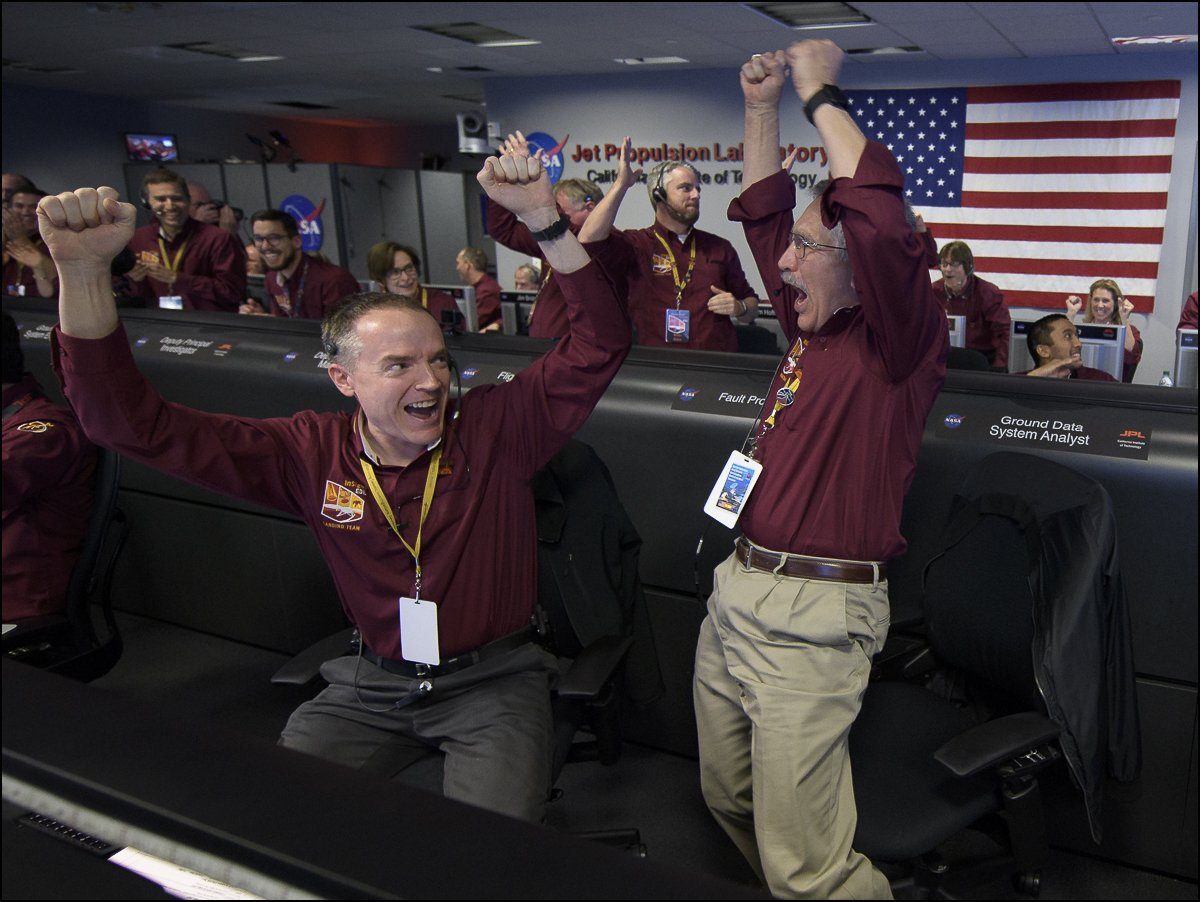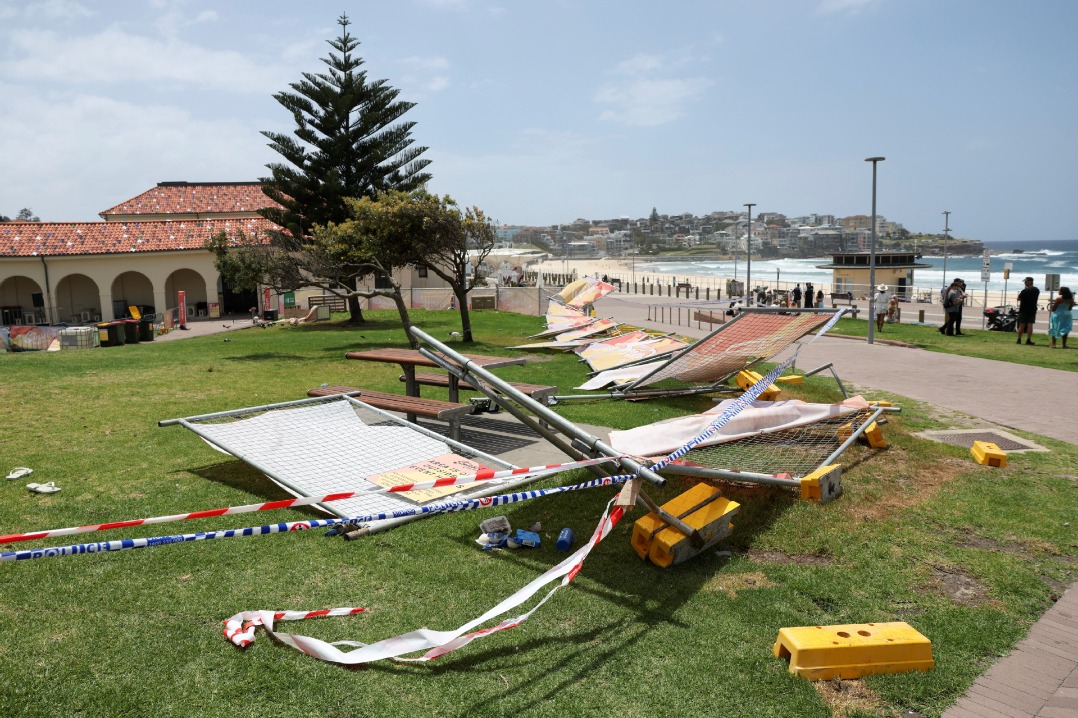NASA's InSight lands on Mars to peer into planet's deep interior


DAREDEVIL LANDING
InSight was the eighth spacecraft to have landed successfully on Mars, all of them operated by NASA.
The three-legged lander streaked into the thin Martian atmosphere at 12,300 miles (19,795 km) per hour and plunged 77 miles to the surface within seven minutes, slowed to a gentle touchdown by atmospheric friction, a giant parachute and retro rockets.
The stationary probe was programmed to pause for 16 minutes for the dust to settle, literally, around its landing site, before two disc-shaped solar panels were to be unfurled like wings to provide power to the spacecraft.
But scientists did not expect to verify successful deployment of the solar arrays for at least several hours.
The 880-pound (360 kg) InSight - its name is short for Interior Exploration Using Seismic Investigations, Geodesy and Heat Transport - marks the 21st U.S.-launched Mars mission, dating back to the Mariner fly-bys of the 1960s.
Nearly two dozen other Mars missions have been sent from other nations.
InSight's new home in the middle of Elysium Planitia, a wide, relatively smooth expanse close to the planet's equator, is roughly 373 miles (600 km) from the 2012 landing spot of the car-sized Mars rover Curiosity, the last spacecraft sent to the Red Planet by NASA.
PEERING BENEATH SURFACE
InSight's primary instrument is a French-built seismometer, designed to record the slightest vibrations from "marsquakes" and meteor impacts around the planet. The device, to be placed on the surface by the lander's robot arm, is so sensitive it can measure a seismic wave just one half the radius of a hydrogen atom.
Scientists expect to see a dozen to 100 marsquakes during the mission, producing data to help them deduce the depth, density and composition of the planet's core, the rocky mantle surrounding it, and the outermost layer, the crust.
The NASA Viking probes of the mid-1970s were equipped with seismometers, too, but they were bolted to the top of the landers, a design that proved largely ineffective.
Apollo missions to the moon brought seismometers to the lunar surface as well. But InSight is expected to yield the first meaningful data on planetary seismic tremors beyond Earth.
A second instrument, furnished by Germany's space agency, consists of a drill to burrow as much as 16 feet (5 meters) underground, pulling behind it a rope-like thermal probe to measure heat flowing from inside the planet.
Meanwhile, a radio transmitter will send back signals tracking Mars' subtle rotational wobble to reveal the size of the planet's core and possibly whether it remains molten.
NASA officials say it will take two to three months for the main instruments to be deployed and put into operation.
The landing data and initial photograph were relayed to Earth from two briefcase-sized satellites that were launched along with InSight and were flying past Mars as it reached its destination. The twin "Cubesats" tagging along for the flight to Mars represented the first deep-space use of a miniature satellite technology that space engineers see as a promising low-cost alternative to some larger, more complex vehicles.
Reuters





























